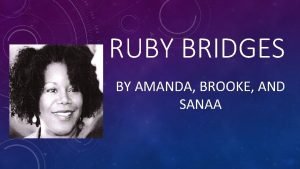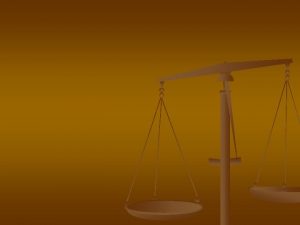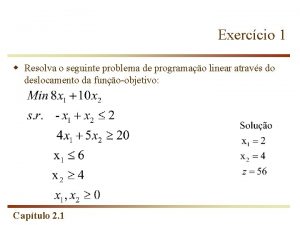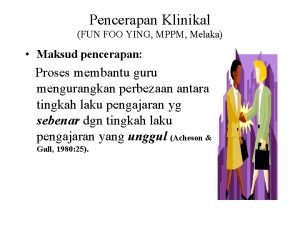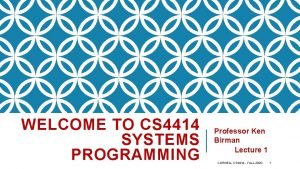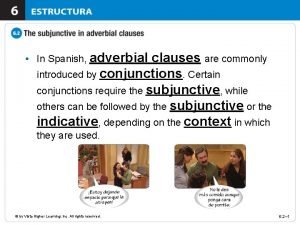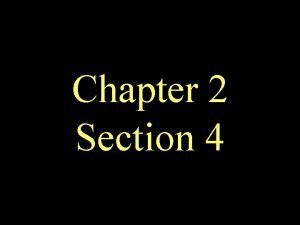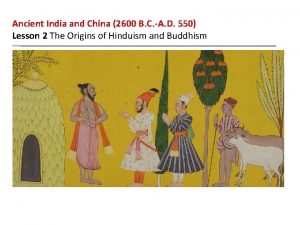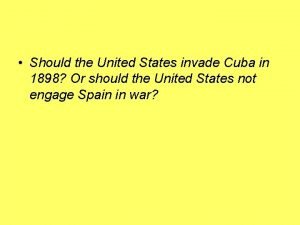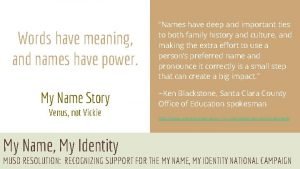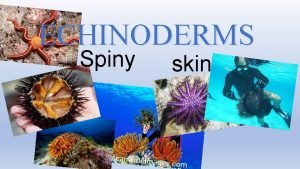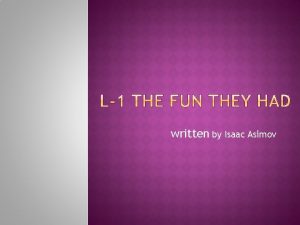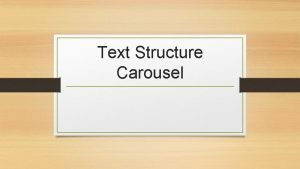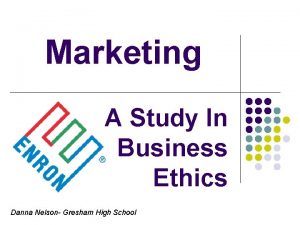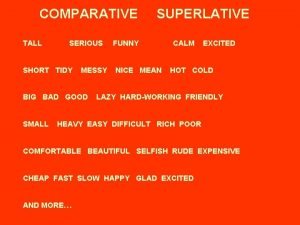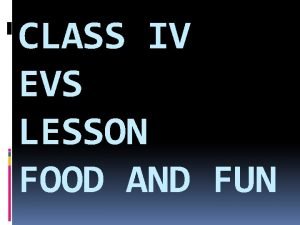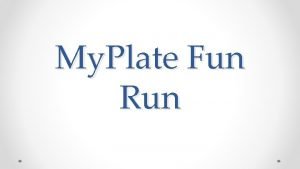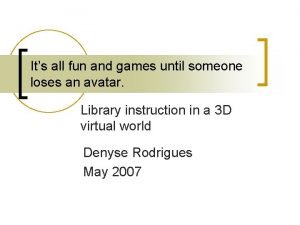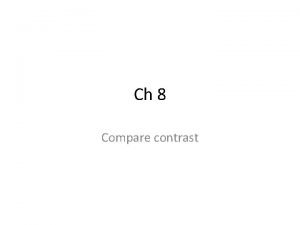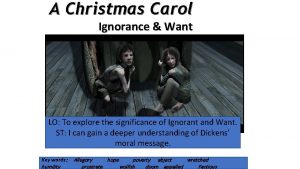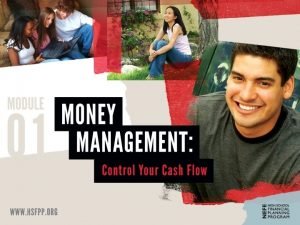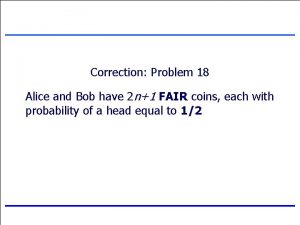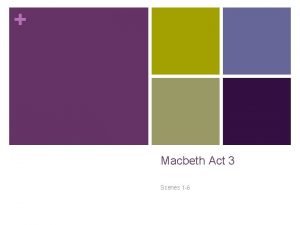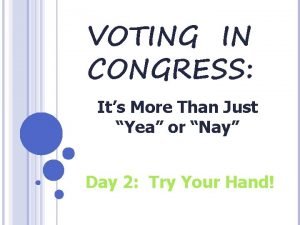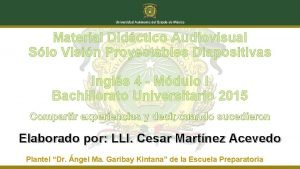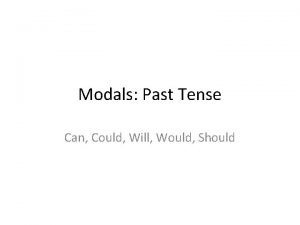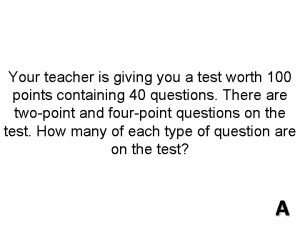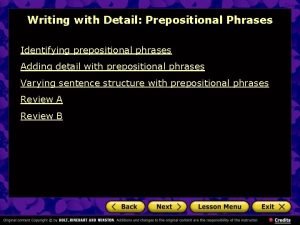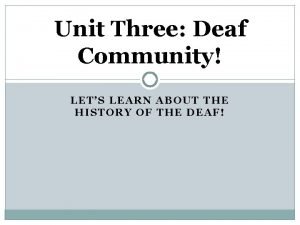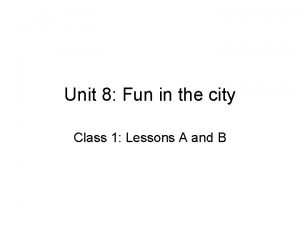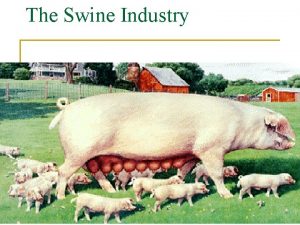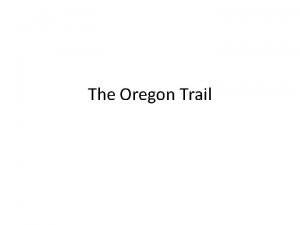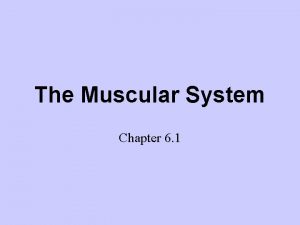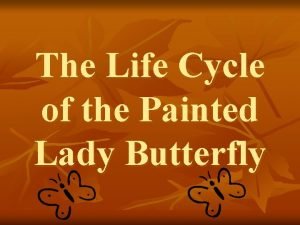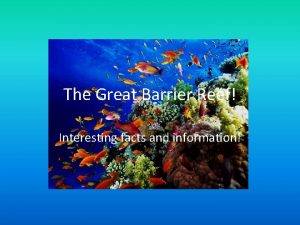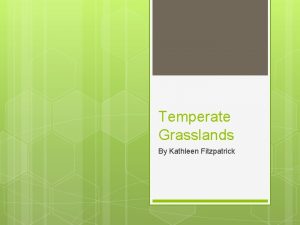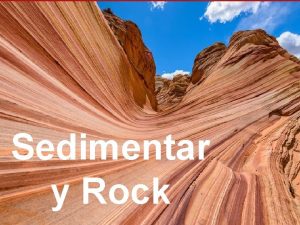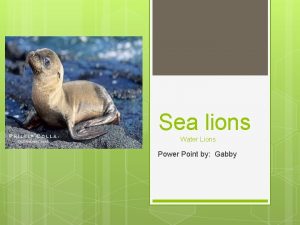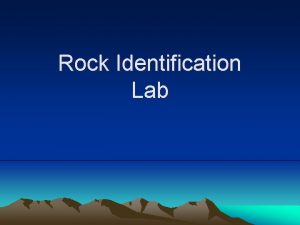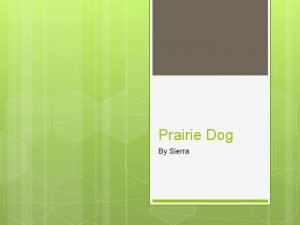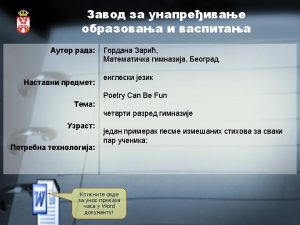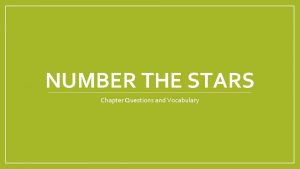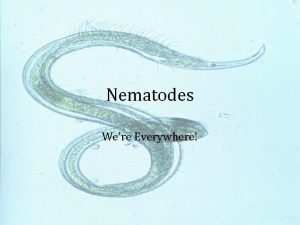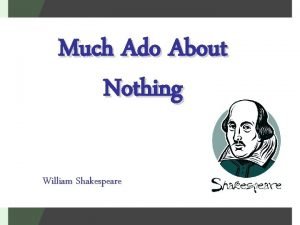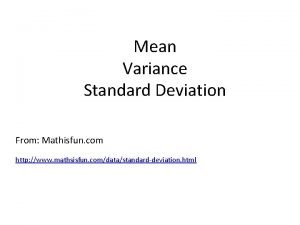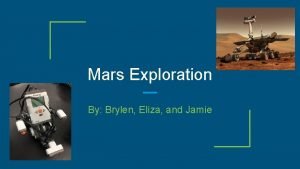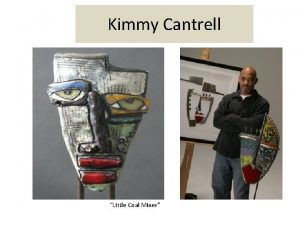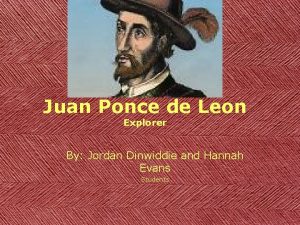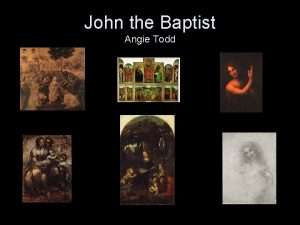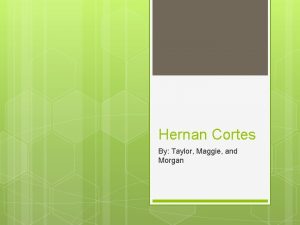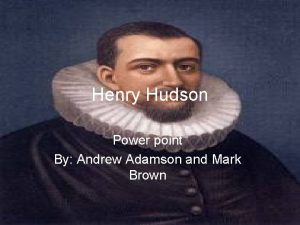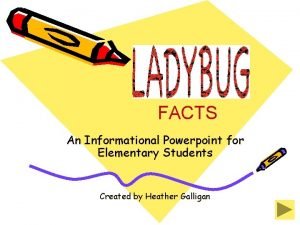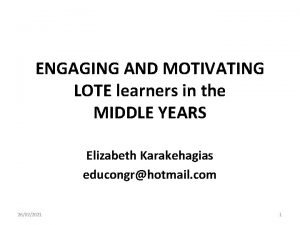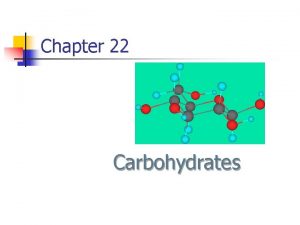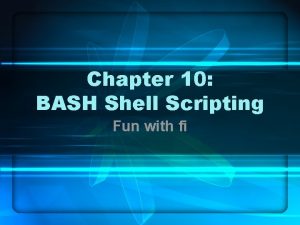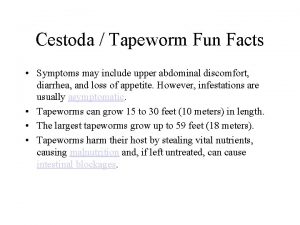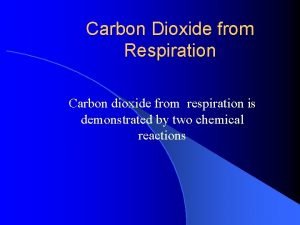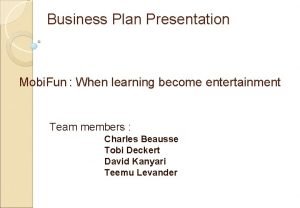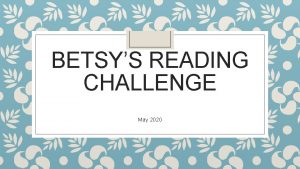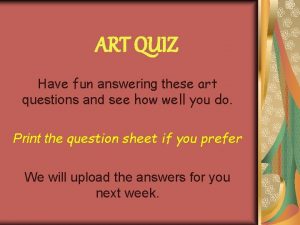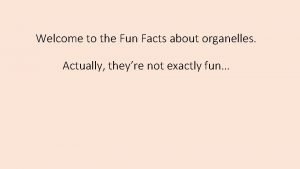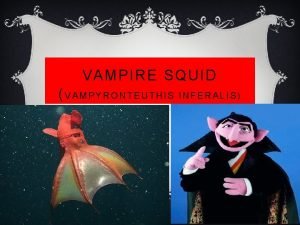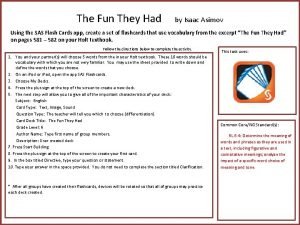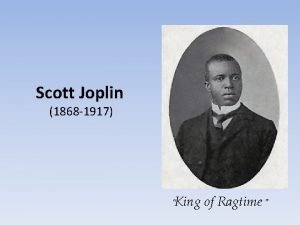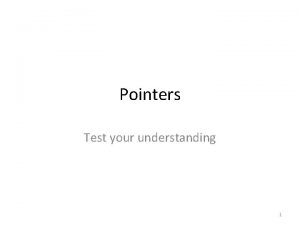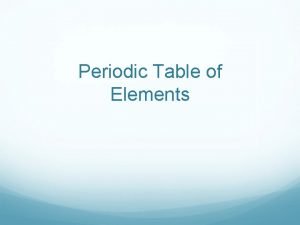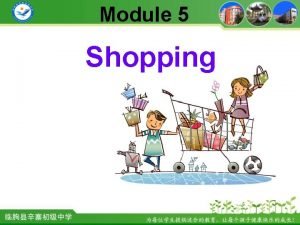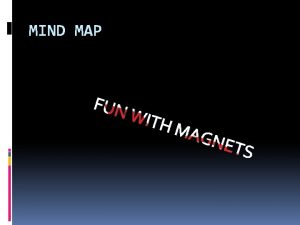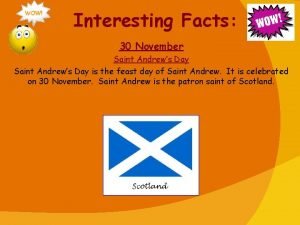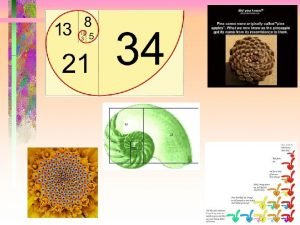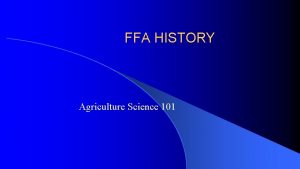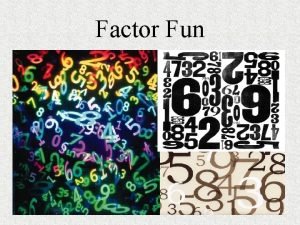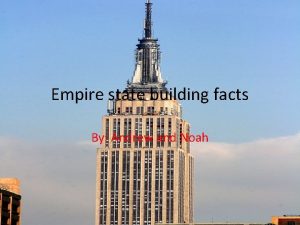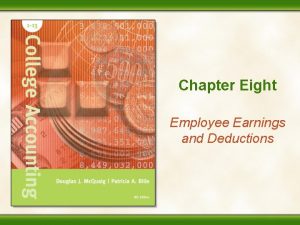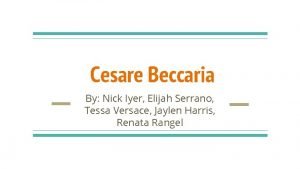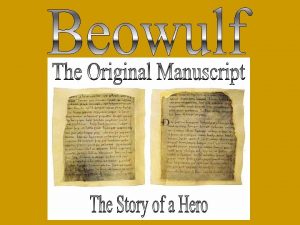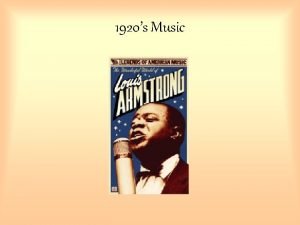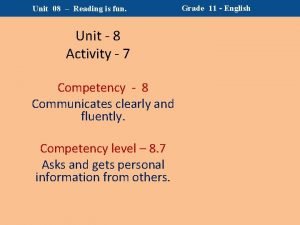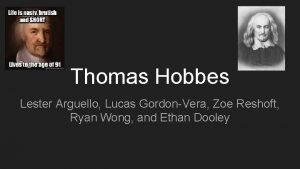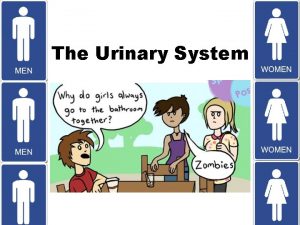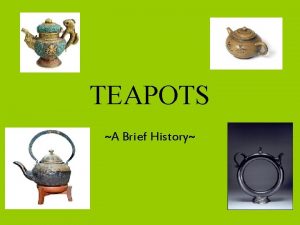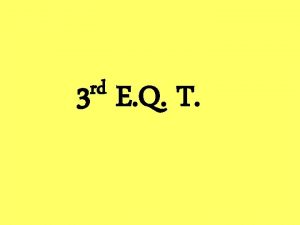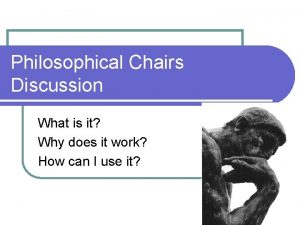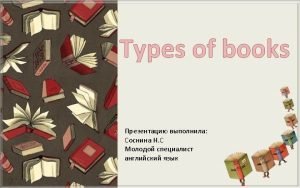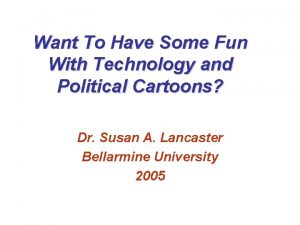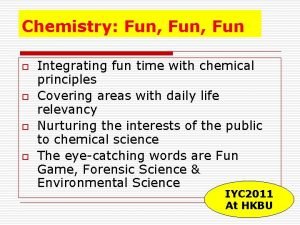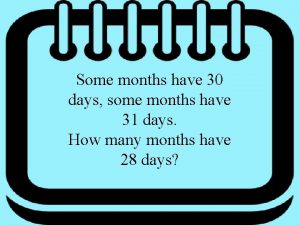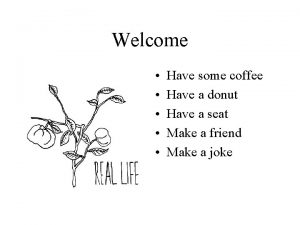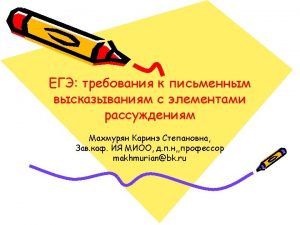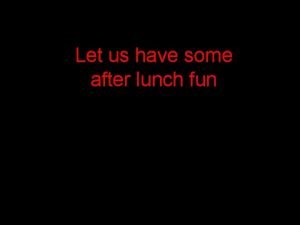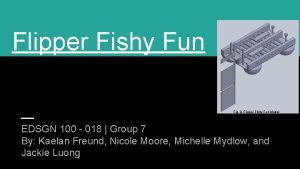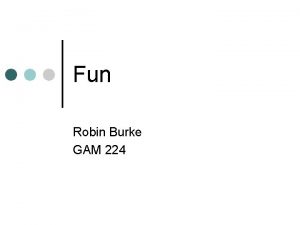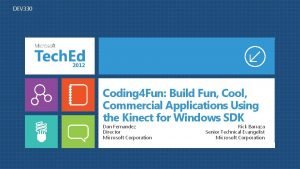Want To Have Some Fun With Technology and



































































































































![Sunshine State Standards Social studies: Grades 6 -8 Time, Continuity, and Change [History] (SS. Sunshine State Standards Social studies: Grades 6 -8 Time, Continuity, and Change [History] (SS.](https://slidetodoc.com/presentation_image_h/12c9179eef6fe7246fb96054af498c4f/image-132.jpg)

![Sunshine State Standards Social Studies: Grades 9 -12 Time, Continuity, and Change [History] (SS. Sunshine State Standards Social Studies: Grades 9 -12 Time, Continuity, and Change [History] (SS.](https://slidetodoc.com/presentation_image_h/12c9179eef6fe7246fb96054af498c4f/image-134.jpg)





















- Slides: 155

Want To Have Some Fun With Technology and Political Cartoons? Dr. Susan A. Lancaster Florida Educational Technology Conference FETC

Political and Editorial Cartoons In U. S. History http: //dewey. chs. chico. k 12. ca. us/edpolcart. html • Political cartoons are for the most part composed of two elements: caricature, which parodies the individual, and allusion, which creates the situation or context into which the individual is placed. • Caricature as a Western discipline goes back to Leonardo da Vinci's artistic explorations of "the ideal type of deformity"-- the grotesque-- which he used to better understand the concept of ideal beauty 2

• Develop Cognitive Thinking and Higher Levels of Evaluation, Analysis and Synthesis • Create Student Drawings and Interpretations • Express Personal Opinions • Real World Issues • Authentic Learning • Critical Observation and Interpretation • Perspective • Historical and Government Events • Group Work • Individual Work • Current Events • Sports Events • Editorial Issues • Foreign Language and Foreign Events • Visual Literacy and Interpretation • Warm-up Activities • Writing Prompts 3

A good editorial cartoonist can produce smiles at the nation's breakfast tables and, at the same time, screams around the White House. That's the point of cartooning: to tickle those who agree with you, torture those who don't, and maybe sway the remainder. http: //www. newseum. org/horsey/ 4

Why include Political Cartoons in your curriculum? My goal was to somehow get the students to think in a more advanced way about current events and to make connections to both past and present Tammy Sulsona http: //nieonline. com/detroit/cftc. cfm? cftcfeature=tammy 5

Cartoon Analysis Level 1 Visuals Words (not all cartoons include words) List the objects or people you see in the cartoon. Identify the cartoon caption and/or title. Locate three words or phrases used by the cartoonist to identify objects or people within the cartoon. Record any important dates or numbers that appear in the cartoon. Level 2 Visuals Words Which of the objects on your list are symbols? What do you think each symbol means? Which words or phrases in the cartoon appear to be the most significant? Why do you think so? List adjectives that describe the emotions portrayed in the cartoon. Level 3 Describe the action taking place in the cartoon. Explain how the words in the cartoon clarify the symbols. Explain the message of the cartoon. What special interest groups would agree/disagree with the cartoon's message? 6 Why? http: //www. archives. gov/digital_classroom/lessons/analysis_worksheets/cartoon. html

Bloom’s Taxonomy 7 http: //www. officeport. com/edu/blooms. htm

ANALYSIS subdividing something to show it is put together; finding the underlying structure of a communication; identifying motives; separation of a whole into component parts What are the parts or features of. . . ? Classify. . . according to. . . Outline/diagram. . . How does. . . compare/contra st with. . . ? What evidence can you list for. . . ? SYNTHESIS creating a unique, original product that may be in verbal form or may be a physical object; combination of ideas to form a new whole What would you predict/infer from. . . ? What ideas can you add to. . . ? How would you create/design a new. . . ? What might happen if you combined. . . ? What solutions would you suggest for. . . ? EVALUATION making value decisions about issues; resolving controversies or differences of opinion; development of opinions, judgements or decisions Do you agree. . . ? What do you think about. . . ? What is the most important. . . ? Place the following in order of priority. . . How would you decide about. . . ? What criteria would you use to assess. . . ? http: //www. officeport. com/edu/blooms. htm 8

Political Cartoons Throughout History 9

• Political cartoons began to appear in 1700 as a means of communicating political news and ideas to a broader audience. • At that time the majority of people could not read. • Political cartoons represented their only link to current political news and ideas. • They have endured because they continue to present the ideas of the day in a succinct and entertaining format. http: //histpres. mtsu. edu/then/Documents/page 9. html 10

• Benjamin Franklin's "Join or Die", which depicts a snake whose severed parts represent the Colonies, is acknowledged as the first political cartoon in America. 11

Marbury v. Madison (1803) http: //www. landmarkcases. org/marbury/cartoon. html 12

Marbury v. Madison (1803) Political Cartoon Analysis Analyze the cartoon in terms of its meaning related to the Marbury v. Madison case. • What do you see in the cartoon? Make a list. Include objects, people, and any characteristics that seem to be exaggerated. • Which of the items on the list from Question 1 are symbols? What does each symbol stand for? • What is happening in the cartoon? • What is the cartoonist's message? • Do you agree or disagree with the message? Explain your answer. 13 http: //www. landmarkcases. org/marbury/cartoon. html

Thomas Nast • In 1873, Nast used his Harper’s Weekly cartoons to crusade against New York City’s political boss William Magear Tweed, and he devised the Tammany tiger for this crusade. • He popularized the elephant to symbolize the Republican Party and the donkey as the symbol for the Democratic Party, and created the "modern" image of Santa Claus. • Thomas Nast’s obituary in 1902, Harper’s Weekly stated, "He has been called … the Father of American Caricature. " 14 http: //cartoons. osu. edu/nast/

Thomas Nast’s Santa "Santa Claus in Camp, " Cover Harper's Weekly, January 3, 1863, http: //cartoons. osu. edu/nast/santa_claus. htm 15

Thomas Nast’s Donkey http: //cartoons. osu. edu/nast/kicking_lion. htm The donkey first appeared as a symbol for the Democratic Party in the 1830 s when the Democrat Andrew Jackson was President. The donkey continued in American political commentary as a symbol for the Democratic Party thereafter. 16

Thomas Nast’s Elephant The elephant has been a symbol of strength since Roman times. It is believed that the first use by the Republican Party dates from a printer’s cut of an elephant during Abraham Lincoln’s 1860 presidential campaign. Thomas Nast was a staunch Republican, and he deliberately chose the elephant as a symbol for his own Party because of the animal’s great size, intelligence, strength, and dignity. The elephant first appeared in his 1874 cartoon, “The Third Term Panic, ” which expresses fear that Grant would run for a third term as President. Nast continued using the elephant thereafter, and gradually it became the Republican icon 17 as it was adopted by other cartoonists. http: //cartoons. osu. edu/nast/off_year. htm

Puck Building off of the personoriented caricature, other small details in Puck usually regarded the transformation of certain objects into symbolic counterparts. Some of the cartoons look as if the main characters are about to be crowded out of the frame by the various and sundry symbols piled up around them; http: //xroads. virginia. edu/%7 EMA 96/PUCK/gallery. html 18

The rise of photography in the nineteenth century had a great deal of impact on the cartoons in Puck "Our National Dog Show" June 16, 1880 http: //xroads. virginia. edu/%7 EMA 96/PUCK/322. jpg 19

The caricature of public men as different breeds of canine affords plenty of humor in itself: they are all of a similar non-human species, but they have each been endowed with peculiar personal traits by 20 nature of their specific pedigrees

Caricatures James A. Garfield (1881) http: //xroads. virginia. edu/%7 EMA 96/PUCK/gallery. html 21

Chester A. Arthur (1881 -1885) http: //xroads. virginia. edu/%7 EMA 96/PUCK/gallery. html 22

Vocabulary of Political Cartoons 23

Vocabulary of Political/Editorial Cartoons Editorial (political) cartoons are illustrations. Editorial (political) cartoons are located in the editorial section, (sometimes called the Op-Ed section, ) of newspapers. Editorial (political) cartoons are designed to make the reader think about current issues and to sway the reader toward the cartoonist’s point of view. 24 http: //go. hrw. com/elot. M/0030526671/student/ch 07/lg 1407284_287. pdf

• Editorial An article presenting an editor’s point of view or opinion • Cynical Distrusting of people’s motives • Symbol Something that stands for or represents something else • Caption Title of a Drawing or illustration • Personification Attributing human characteristics to animals or other objects 25

Exaggeration/Caricature: Overstating an aspect of a problem or exaggerating a person’s physical features Analogy: Comparing two things; for instance, directly or indirectly comparing a situation or event with a historical or fictional event Irony: Contrasting (often humorously) between appearance or expectation and reality http: //go. hrw. com/elot. M/0030526671/student/ch 07/lg 1407284_287. pdf 26

Political Cartoons and the United States Presidency Dr. Eric Roorda, Bellarmine University 27

Andrew Jackson grew up in NC, moved to TN. He was the first Democrat, elected in the first election when men without property could vote. He used presidential power so much that critics accused him of ruling like a king. That was ironic, because Andy was the first president who was poor as a child and had little formal education. But he ignored the Supreme Court when it ruled in favor of the Cherokee Nation, and threatened war against SC over federal tax policy. 28

Many political cartoons of the time made fun of Lincoln. 29

Some were really harsh! Abe Lincoln grew up in IN and KY, then moved to IL. Like Jackson, he came from a poor family. The first member of the new Republican Party to become president, he also used his power very vigorously during the Civil War, such as abolishing slavery. 30

Theodore Roosevelt was the first urban president, born and raised in New York City. After a period when the presidents were not very powerful, the next strong president was Teddy, who was a Republican (also called the Party of Lincoln or the GOP, for Grand Old Party). He traveled widely in his youth, and was the first president to leave the country while in office, to Panama to see the Canal being built. 31

Three former or future presidents vied for the White House in 1912. TR from NY, incumbent William Taft of OH, and Woodrow Wilson, who grew up in VA and moved to NJ. It was a close election, won by Democrat Wilson when TR’s third party, the “Bull Moose” or “Progressive” party, split the Republicans, led by Taft. All three were fun to draw! 32

“Progressive” means using the government to solve social problems. Presidents of both political parties have been “progressive, ” putting federal authority to work for people. TR and WW were both very progressive, one GOP, the other Dem. Wilson had been a teacher and college president, and as Chief Executive, he tried to teach the world to behave peacefully. But his policies led to war in Haiti, the Dominican Republic, Mexico, and in Europe during WWI. 33

Wilson spent months in Paris during his presidency, negotiating the end of WWI. Herbert Hoover was the most widely traveled of the presidents during his career as a mining engineer, including periods spent living in China and Australia before he entered government service. Hoover was the third Republican president in a row following Wilson. The stock market crash and Great Depression ruined his chances for re-election. He became identified with rich bankers… 34

…which was ironic, because Hoover, like Jackson and Lincoln, was very poor as a child. He grew up in a tiny shack in IA, was an orphan at the age of ten, yet made it to college at Stanford in CA. He believed that government power should be used very sparingly, and that the “rugged individualism” of the Americans would lead them to help themselves and each other through hard times. His views changed, shown in cartoons by Iowan “Ding” 35 Darling, his friend.

FDR was the most progressive of all, in terms of laws passed. Like distant cousin Teddy, Franklin was a NY boy, but very rich! 36

Unlike Teddy, FDR was a Democrat, and he pronounced his name “rose-a-velt, ” not “roos-avelt, ” like TR did. Franklin married Teddy’s niece, Eleanor Roosevelt, who was the first strong First Lady since Dolly Madison. Although he grew up in a mansion on the Hudson River and traveled around Europe as a teenager, FDR ID’d himself as a friend of “The Forgotten Man. ” 37

Franklin Roosevelt was also an internationalist, who tried to bring countries together in trade and peace pacts. But the economic isolation depicted here turned to war in Europe in 1939, so FDR was the first and last to run for a third, then a fourth, term in office. 38

“John Bull” is the British Uncle Sam! FDR developed strong opinions about the British and German people during his bike tour at age 17. Before and during WWII, FDR traveled around the world to meetings: Argentina, Canada, Egypt, Iran, and the Crimean Peninsula on the Black Sea in Russia. 39

Harry Truman from MO was the fourth different VP for FDR, who became president when he died. Facing election on his own, the former haberdasher from Kansas City ran into trouble with Democrats in the South. Some of them formed a third party called the “Dixie-crats, ” with Strom Thurmond of SC as candidate. Truman won anyway. 40

Dwight Eisenhower from KS was one of six brothers who grew up on a farm in Abilene. He worked at a dairy to put his brother through college, then went to West Point himself. Serving a career in the Army and rising to be the top general in Europe during WWII, “Ike” had never voted in his life when he ran for president! Both parties asked the great warrior to represent them in 1952! The Civil Rights Movement gained momentum during his two terms. Although accused of inaction here, he enforced the Brown school integration ruling of the Supreme Court by 41 sending troops into Little Rock, AK.

John F. Kennedy from MA was the son of a man who became wealthy from illegal activities such as smuggling, who went on to be ambassador to England! JFK hurt his back in a shipwreck during WWII, but he became a Democratic senator and then the first Catholic president. World War Three almost began when he was president, in the famous Cuban Missile Crisis. He and Soviet premier Nikita Khrushchev are the subjects of this cartoon about the Cold War menace. 42

Lyndon Baines Johnson took over when JFK was killed. He was from TX, where his father was a failure as a farmer in the drought-prone hill region near Austin, but a success as a state legislator. LBJ was a big man who could use his size and powerful personality intimidate people in “the Johnson treatment, ” towering over them as shown here. He was a progressive, inspired by FDR. His “Great Society” package included civil rights laws that only a southerner could propose, and “War on Poverty” aid for Appalachian and 43 urban poor.

Richard Nixon was the first suburban president, growing up near Los Angeles, CA. He had trouble with his public image while serving as Eisenhower’s VP. This 1954 cartoon accused him of Red Scare sewer politics for the GOP cause. After losing to JFK in 1960, he came back in 1968, when LBJ bowed out of the race due to the Vietnam War. 44

After squeaking through in the violent, tight, 3 -party election of 1968, Nixon won a landslide in 1972. Nixon traveled widely as VP and President, including a historic visit to China. But he was never popular with the print press, and cartoonists had a field day with his long nose and heavy jowls. His morose expression got gloomier as the twin crises of Vietnam and the Watergate Scandal wrecked his presidency. Once one of the most powerful presidents, he became the only one to resign, doing so in 1974. 45

Jimmy Carter grew up in a small town in GA called Plains, where his family farmed peanuts. After a career in the Navy and as governor, he campaigned as an “outsider” in the wake of the Watergate scandal. Nixon had been the first Republican to sweep the “Solid South” from the Democrats since the end of Reconstruction, but Carter won it back in the bicentennial election year of 1976. A weak though honest executive, Carter was doomed by 46 the Iran hostage crisis.

Ronald Reagan grew up in small towns in IL before seeking his career as an actor in Hollywood. After performing in many movies and TV shows, he was elected governor of CA. Trained as a strong communicator, his style contrasted with Carter’s low-key “fireside chats, ” which he borrowed from FDR. Reagan was a strong president with a Republican Congress who served two terms. He was not a progressive, believing that private power was preferable to that of the government in solving problems. 47

Political Cartoonists 48

Dr. Seuss Went to War: A Catalog of Political Cartoons By Theodor Seuss Geisel http: //orpheus. ucsd. edu/speccoll/dspolitic/ 49

Note: 1942 Cartoon using the signature Dr. Seuss http: //orpheus. ucsd. edu/speccoll/dspolitic/ 50

Dr. Seuss (Theodor Seuss Geisel, 1904 -1991) was a life-long cartoonist: in high school in Springfield, Massachusetts; in college at Dartmouth (Class of 1925); as an adman in New York City before World War II. Cartoon using the signature Dr. Seuss 51 http: //orpheus. ucsd. edu/speccoll/dspolitic/

But for two years, 1941 -1943, Seuss was the chief editorial cartoonist for the New York newspaper PM (1940 -1948), and for that journal he drew over 400 editorial cartoons. Buy United States Savings Bonds and Stamps http: //orpheus. ucsd. edu/speccoll/dspolitic/ 52

One Buck out of Every 10 ! The Buck (with the $ antlers) looks like a familiar Dr. Seuss character 53 http: //orpheus. ucsd. edu/speccoll/dspolitic/

Dr. Seuss drew a set of war bonds "cartoons" which appeared in many newspapers as well as in PM http: //orpheus. ucsd. edu/speccoll/dspolitic/ 54

Herb Block Won three Pulitzer Prizes, died at 91 in 2001. 55

56

Pat Oliphant No one is safe from the acid brush of Pat Oliphant, acknowledged by many as the nation's most influential political cartoonist. A master of what he calls "confrontational art, " Oliphant spares neither the liberal nor conservative, sinner nor saint. As the most widely syndicated political cartoonist in the world and a winner of the Pulitzer, he http: //www. ucomics. com/patoliphant/index. phtml produces work that is as visually stunning as it is metaphorically powerful. 57

http: //www. ucomics. com/patoliphant/index. phtml 58

59 http: //www. ucomics. com/patoliphant/index. phtml

http: //www. ucomics. com/patoliphant/index. phtml 60

http: //www. ucomics. com/patoliphant/index. phtml 61

http: //www. ucomics. com/patoliphant/index. phtml 62

Pat Oliphant • Oliphant won the Pulitzer Prize for editorial cartooning in 1966 with this cartoon showing Ho Chi Minh, president of North Vietnam, carrying a dead Viet Cong soldier. http: //www. loc. gov/exhibits/oliphant/part 1. html 63

Pat Oliphant A Gallup Poll surveying the Democrats in the 1980 presidential campaign was released on December 11, 1979. It showed President Jimmy Carter ahead of Senator Edward Kennedy for the first time in two years http: //www. loc. gov/exhibits/oliphant/part 1. html 64

Pat Oliphant George Bush The enviornmentalist as well as…. “Read my lips—No new taxes!" http: //www. loc. gov/exhibits/oliphant/part 1. html 65

Pat Oliphant 1992 Independent presidential candidate Ross Perot http: //www. loc. gov/exhibits/oliphant/part 1. html 66

Pat Oliphant During the 1992 election Clinton had been featured playing his saxophone on numerous occasions throughout the campaign 67 http: //www. loc. gov/exhibits/oliphant/part 1. html

The side comments by the Oliphant narrator 68

The side comments by the Oliphant narrator 69

http: //www. kingfeatures. com/features/comics. htm 70

Jim Borgman. Cincinnati Enquirer's PULITZER PRIZE winner, National Cartoonists Society's Best Editorial Cartoonist 4 times and NCS Reuben Award winner! http: //www. kingfeatures. com/features/comics. htm 71

Ed Gamble, the firstever editorial cartoonist for The Florida Times-Union in Jacksonville, knows how to make his point. The award-winning cartoonist has been nationally syndicated for more than 20 years 72 http: //www. kingfeatures. com/features/comics. htm

Mike Peters. Dayton Daily News' PULITZER PRIZE winner, National Cartoonists Society's Best Editorial Cartoonist two times and NCS Reuben Award winner! 73 http: //www. kingfeatures. com/features/comics. htm

Mike Shelton. Always conservative, from the Orange County Register http: //www. kingfeatures. com/features/comics/comi 74 cs. htm

Mike Smith. Award-winning editorial cartoonist for the Las Vegas Sun http: //www. kingfeatures. com/features/comics. htm 75

More Political Cartoonists ON LINE 76

• Style of the drawing • The student can draw his/her own • What the artist is trying to say • How timely (Regionally appropriate, locally, nationally • Analyze, evaluate, synthesize information • Caption/no caption • Non-readers of History 77

Favorite Editorial Cartoonists on line Christian Science Monitor Clay Bennett Cartoons 78 http: //www. csmonitor. com/news/clay. Latest 15 Static. html

79 http: //www. csmonitor. com/news/clay. Latest 15 Static. html

80 http: //www. csmonitor. com/news/clay. Latest 15 Static. html

81 http: //www. csmonitor. com/news/clay. Latest 15 Static. html

Clay Bennett • Born January 20, 1958 in Clinton, South Carolina. Growing up the son of a career army officer, he led a nomadic life, attending ten different schools before graduating in 1976 from S. R. Butler High School in Huntsville, Alabama. Served as editorial cartoonist for his college paper and managing editor of the alternative student newspaper while attending the University of North Alabama. Graduated in 1980 with degrees in Art and History. • Worked as a staff artist for both the Pittsburgh Post- Gazette and The Fayetteville (NC) Times before accepting the editorial cartooning position with the St. Petersburg Times in 1981. Leaving the Times in 1994, he trained in computer graphics and digital animation to create fully animated editorial cartoons for the internet while continuing to produce print cartoons for syndicated distribution. • In 1998 he joined the staff of The Christian Science Monitor where he produces five cartoons a week, all in full color. 82

Some of Clay Bennett’s AWARDS: Grand Prize, 2004 National Population Cartoon Contest 2004 National Headliner Award for Editorial Cartoons Finalist, 2003 Pulitzer Prize for Editorial Cartooning 2002 Best Editorial Cartoons, The National Cartoonists Society 2002 National Journalism Award, Scripps Howard Foundation 2001 Sigma Delta Chi Award, Society of Professional Journalists First Place, 2001 John Fischetti Editorial Cartoon Competition 2001 Editorial Cartoonist of the Year, Editor & Publisher Magazine Finalist, 2001 Pulitzer Prize for Editorial Cartooning 2000 National Headliner Award for Editorial Cartoons 83

About Nick Anderson http: //cagle. slate. msn. com/politicalcartoons/PCcartoons/anderson. NICK. asp nanderson@courier-journal. com • The Washington Post Writers Group says, "Nick Anderson brings a fresh, youthful approach to editorial cartooning. His clean lines and classic style belie an unconventional message that carries wide appeal. " • Since joining the Louisville Courier-Journal in January 1991, a month after graduating from Ohio State, Anderson's cartoons have been published in Newsweek, The New York Times, The Washington Post, USA Today, and the Chicago Tribune. • At Ohio State, Anderson majored in political science and was editorial cartoonist for the university 84 newspaper.

• He interned one summer with The Courier-Journal. After graduation, the newspaper created a position for him as associate editorial cartoonist and illustrator. He was promoted to chief editorial cartoonist in September, 1995 • Anderson, 34, grew up in Toledo, Ohio, in a family that was apolitical. At 15, he started drawing cartoons for his high school newspaper and immediately knew his calling. • In his spare time, he enjoys mountain biking and kayaking. In 1988 he cycled across the country from Oregon to Massachusetts. He lives in Louisville with his wife Cecilia, and their sons Colton and Travis. • His son's names are hidden in all of Nick's cartoons. 85

86 http: //cagle. slate. msn. com/politicalcartoons/PCcartoons/anderson. NICK. asp

87 http: //cagle. slate. msn. com/politicalcartoons/PCcartoons/anderson. NICK. asp

http: //cagle. slate. msn. com/politicalcartoons/PCcartoons/anderson. NICK. asp 88

Travis and Colton 89

James Casciari - Award winning editorial cartoons from the Scripps Howard News Service http: //cagle. slate. msn. com/politicalcartoons/pccartoons/archives/casciari. asp? Action=Get. Image 90

Paul Combs Tampa Tribune http: //www. cagle. com/politicalcartoons/PCcartoons/combs. asp 91

Doug Mac. Gregor, The Ft. Myers News-Press 92 http: //www. cagle. com/politicalcartoons/PCcartoons/macgregor. asp

Jeff Parker, Florida Today 93 http: //www. cagle. com/politicalcartoons/PCcartoons/parker. asp

Steve Kelley, The New Orleans Times-Picayune 94 http: //www. cagle. com/politicalcartoons/PCbest 2. asp

95 http: //www. cagle. com/news/Clinton. Library/1. asp

Additional Comments At first students are critical because it requires them to think, later on their chores become interesting challenges. I believe teaching through editorial cartoons is the way to reach many students who will not read the textbook or a newspaper. http: //nieonline. com/detroit/cftc. cfm? cftcfeature=feedback 96

Bloom’s Taxonomy 97 http: //www. officeport. com/edu/blooms. htm

ANALYSIS subdividing something to show it is put together; finding the underlying structure of a communication; identifying motives; separation of a whole into component parts What are the parts or features of. . . ? Classify. . . according to. . . Outline/diagram. . . How does. . . compare/contras t with. . . ? What evidence can you list for. . . ? SYNTHESIS creating a unique, original product that may be in verbal form or may be a physical object; combination of ideas to form a new whole What would you predict/infer from. . . ? What ideas can you add to. . . ? How would you create/design a new. . . ? What might happen if you combined. . . ? What solutions would you suggest for. . . ? EVALUATION making value decisions about issues; resolving controversies or differences of opinion; development of opinions, judgements or decisions Do you agree. . . ? What do you think about. . . ? What is the most important. . . ? Place the following in order of priority. . . How would you decide about. . . ? What criteria would you use to assess. . . ? http: //www. officeport. com/edu/blooms. htm 98

Garner’s Multiple Intelligences Linguistic: syntax, phonology, semantics, pragmatics Musical: pitch, rhythm, timbre Logical mathematical : number, categorization, relations Spatial: accurate mental visualization/transformation of images Bodily kinesthetic: control of one's own body, control in handling objects Interpersonal: awareness of others' feelings, emotions, goals, motivations Intrapersonal: awareness of one's own feelings, emotions, goals, motivations Naturalist: recognition and classification of objects in the environment http: //zelenskidesigns. com/technolog tm 99

Marco. Polo http: //www. marcopolo-education. org 100

Drawing Political Cartoons Lesson Overview: The purpose of using political cartoons is to develop both factual knowledge and interpretive skills. Students must have background information before they can analyze a political cartoon or drawing, so it is easiest to teach this skill using a current event. Once the students have mastered the analysis of current events, they should able to approach similar tasks with historical cartoons and drawings. Length of Lesson: Four 45 -minute periods Instructional Objectives: Students will: • analyze visual and language clues to determine the meaning of contemporary and historical political cartoons. • create a political cartoon based on a current event. http: //www. artsedge. kennedy-center. org/content/2100/ 101

Instructional Plan: Introduction • Read the following quote to the class: “A cartoonist is a writer and artist, philosopher, and punster, cynic and community conscience. He seldom tells a joke, and often tells the truth, which is funnier. In addition, the cartoonist is more than a social critic who tries to amuse, infuriate, or educate. He is also, unconsciously, a reporter and historian. Cartoons of the past leave records of their times that reveal how people lived, what they thought, how they dressed and acted, what their amusements and prejudices were, and what the issues of the day were. " (Ruff and Nelson, p. 75) • Tell students that they will be creating a political cartoon based on a current event, providing them with their own opportunity to leave a record of their time. http: //www. artsedge. kennedy-center. org/content/2100/ 102

In one of Charles Schulz's Peanuts strips, Lucy announces that she's going to be a political cartoonist "lashing out with my crayon. " Just as Charlie Brown asks the subject of her work, she strikes the paper with such a bold stroke that it snaps her crayon in half. "I'm lashing out, " she says, "at the people who make these stupid crayons. “ http: //www. loc. gov/rr/print/swann/herblock/cartoon. html 103

The following are suggestions for analyzing cartoons: • Every cartoon should be placed in a historical and geographical context (i. e. , time and place). • All personalities represented in a cartoon should be identified. • Cartoon analysis should finish with a description of the overall message of the cartoon. • Students must be taught how to interpret symbols, the visual clues sent out from the cartoon, as well as how to interpret captions, the verbal clues sent out from the cartoon. • Students need to pay attention to size and placement of people, objects, symbols, and writing on the cartoon. • Teachers should select cartoons according to the students' knowledge and ability level. • Teachers should get the class to brainstorm ideas to evoke different responses. Divergent answers should be accepted. Interpretation must be open-ended. 104

Rubric for Student Created Political Cartoon Needs Work Satisfactory Strong Context Cartoon reflects today's society Cartoon reflects a controversial issue in today's society. Cartoon reflects the complexities of a controversial issue in today's society. Caption Title's connection Title is related to the design and issue is unclear. Title is related to design and provides a clear verbal clue about meaning and issue. Design Work incorporates design elements in a limited fashion. Work incorporates at least two important elements of political cartoon design. Work incorporates three or more design elements as visual clues about the meaning of political cartoons Oral Presentation Discusses cartoon in a general way. Articulates both the context and design elements of cartoon Presents a synthesis of issues and identifies how the elements contribute to meaning. 105

Targeted Standards: The National Standards For Arts Education: Visual Arts (9 -12) Standard 4: Understanding the visual arts in relation to history and cultures Visual Arts (9 -12) Standard 6: Making connections between visual arts and other disciplines Other National Standards: Historical Understanding IV (9 -12) Standard 1: Understands and knows how to analyze chronological relationships and patterns Historical Understanding IV (9 -12) Standard 2: Understands the historical perspective 106

Political Cartoons: Introduction to Symbols • Discuss why symbols are used and why they are effective • The students will decide together what the actual meaning of each symbol is. • The students can then show their knowledge through a group project where they develop their own cartoons http: //www. trumanlibrary. org/whistlestop/teacher_lessons/cartoon_symbol. htm 107

• Divide students into groups and have them examine political cartoons at • 1948 Campaign Political Cartoons. • Make a list of the symbols used in these cartoons. Have each group discuss what they think the symbols mean http: //www. trumanlibrary. org/whistlestop/teacher_lessons/cartoon_symbol. htm 108

Franklin Delano Roosevelt's Deception: Was It Successful? You Decide! 109 http: //www. nisk. k 12. ny. us/fdr/FDRcartoons. html

• Overview: By viewing historic photos and political cartoons, students will examine the success of FDR's attempts to hide the extent of his physical disability. • Student Activity: After presenting the above introduction, explain to the students that they are to work in groups of three or four and come to a group consensus regarding whether FDR was successful or unsuccessful in concealing the extent of his disability from the American people. They will do this by examining the large collection of historic photos and political cartoons available on the Internet • After coming to their conclusions, they will choose two photos and two political cartoons that they believe provide the best evidence to support their position. Each group will present their photos and cartoons along with an explanation, to the rest of the class. 110 http: //www. cloudnet. com/~edrbsass/fdrlessons. htm

http: //www. comics. com/categories/index. html Brian Adcock Robert Ariail Best of Latin America Chuck Asay Steve Benson Chip Bok Daryl Cagle Cam Cardow Patrick Chappatte M. E. Cohen John Cole Bill Day Bob Englehart Brain Fairrington Jerry Holbert Sandy Huffaker Etta Hulme Mike Keefe Mike Lane Mike Lester Drew Litton Mike Luckovich Vince O'Farrell Jeff Parker Henry Payne Stephane Peray Dan Reynolds Rob Rogers Bill Schorr Jeff Stahler Ed Stein Paul Szep Tab Gary Varvel Monte Wolverton Larry Wright 111

A Sampling of Political Cartoons Online Lesson Plans and Resources For Teachers Grades K-12 112

TEACHERS GUIDE! http: //www. cagle. com/teacher/ National Archives http: //www. archives. gov/digital_classroom/less ons/analysis_worksheets/cartoon. html Newspapers in Education http: //nieonline. com/detroit/cftc. cfm 113

http: //www. cagle. com/politicalcartoons/main. asp Canadian Artists Aislin Montreal Gazette Bado Journal Le. Droit/Ottawa Cameron Cardow Ottawa Citizen Patrick Corrigan Toronto Star Gary Clement National Post, Toronto Dale Cummings Winnipeg Free-Press Michael De. Adder Halifax Daily News Tim Dolighan Canada Freelance Andy Donato Toronto Sun World. Wide Artists Brian Adcock Scotland Wolfgang Ammer Vienna, Austria Anjomrooz Sepideh Tehran, Iran Arcadio Esquivel San Jose, Costa Rica Ares Latin America Ross Bateup Adelaide, Australia Fritz Behrendt Netherlands Joep Bertrams Amsterdam, Netherlands Bleibel Beirut, Lebanon 114

American Artists • Lalo Alcaraz • Scott Bateman L. A. Weekly National/Freelance Eric Allie Bruce Beattie Pioneer Press (IL) Daytona News-Journal Kirk Anderson Clay Bennett St Paul Pioneer Press Christian Science Monitor Nick Anderson Steve Benson Louisville Courier-Journal Arizona Republic Chuck Asay Randy Bish Colorade Springs Gazette Pittsburgh Tribune. Robert Ariail Review The State, SC Chip Bok Rex Babin Akron Beacon-Journal Sacramento Bee John Branch Pat Bagley San Antonio Express. Salt Lake Tribune, UT News 115

• Steve Breen San Diego Union-Tribune Chris Britt State Journal-Register Gary Brookins Richmond Times. Dispatch Jonathan Brown Deseret News, Utah Daryl Cagle Slate. com James Casciari Scripps Howard Ken Catalino National/Freelance • David Catrow Springfield News-Sun M. e. Cohen National/Freelance John Cole Durham Herald-Sun Paul Combs Tampa Tribune Paul Conrad Tribune Media Services J. D. Crowe Mobile Register Tom Curry Alpine Observer, TX Jeff Danziger Miami Herald 116

http: //www. cagle. com/teacher/ Grades 6 through 8 / Lesson Plans www. cagle. com/teacher Objectives: Students will be able to better understand the importance of current events. Materials: Computer lab with internet access-1 station per 2 students Activities: Explore significant events from the news through an investigation of editorial cartoons. Direct students to log onto interent & proceed to www. cagle. com & select editorial cartoons contents page from the left hand navigation column then select editorial cartoons: 117

TEACHERS GUIDE! http: //www. cagle. com/teacher/ This is the Teachers' Guide for using the Professional Cartoonists Index web site in your classes. We have developed lesson plans for using the editorial cartoons as a teaching tool in Social Sciences, Art, Journalism and English at all levels --click on the icons to the left to visit our lesson plans. We're working with our friends at Class. Brain to create new daily lesson plans. We will feature five new cartoons each week, often with comments by the cartoonists who drew the cartoons. Click on the arrow to scroll through the five cartoon lesson plans. Teacher's are welcome to print these cartoons out for use in their classrooms --you dont have to ask for permission. We may give you permission to republish these cartoons in your publications also, contact cari@cagle. com. 118

Lesson plans http: //nieonline. com/detroit/cftc. cfm Elementary (K-4) Middle (5 -8) Secondary (9 -12) Current events Geography Quiz Detroit Pop Quiz Archive Today in history Cartoons for the Classroom 119

• http: //nieonline. com/detroit/cftc. cfm 120

Current Events Project #1 By Artist - Mike Lester, The Rome News-Tribune Project - Sarah Lane & Cynthia Kirkeby Dec 21, 2004 • 121

In a move that sparked many a raised eyebrow the Federal Communications Commission (FCC) will examine the ban on using cellular telephones on airborne aircraft. They will explore technical options for permitting controlled use of cellular handsets and other wireless devices on airborne aircraft as a means to increase communications options available to the travelling public, as well as public safety personnel. The FCC currently requires all cellular handsets to be turned off once an aircraft leaves the ground to avoid interfering with terrestrial cellular systems. The Federal Aviation Administration (FAA) restricts the use of mobile telephones and other portable electronic devices on aircraft. 122

Do you think this is a good idea? Why or why not? What’s the most annoying thing anyone has ever done on an aircraft while you were flying? If the Commission were to relax the current ban, what would be the advantages? What would be the disadvantages? Is airborne connectivity or communication options for wireless users a priority for you? Do you think this change will actually go into effect? If so, when? Sites to See Federal Communications Commission (FCC) Federal Aviation Administration (FAA) 123

• Students will look at all editorial cartoons on all the pages & record all the events depicted. Can be done individually or in pairs. • Students will write a general description of cartoons for which they are not aware of a specific event. ****************************** • Compare & contrast the lists generated • Homework: Write about the significance of one of the events depicted in the editorial cartoons. • Evaluation: Assess comprehension of the events depicted through discussion & written assignment. 124

Mike Lane, Baltimore, Maryland, The Baltimore Sun 125

Cartoon Analysis Level 1 Visuals Words (not all cartoons include words) List the objects or people you see in the cartoon. Identify the cartoon caption and/or title. Locate three words or phrases used by the cartoonist to identify objects or people within the cartoon. Record any important dates or numbers that appear in the cartoon. Level 2 Visuals Words Which of the objects on your list are symbols? What do you think each symbol means? Which words or phrases in the cartoon appear to be the most significant? Why do you think so? List adjectives that describe the emotions portrayed in the cartoon. Level 3 Describe the action taking place in the cartoon. Explain how the words in the cartoon clarify the symbols. Explain the message of the cartoon. 126 What special interest groups would agree/disagree with the cartoon's message? Why? http: //www. archives. gov/digital_classroom/lessons/analysis_worksheets/cartoon. html

• Find an example of an editorial cartoon in a newspaper, and briefly analyze it by answering the following questions on your own paper. Then, share and discuss your cartoon and analysis with a group of two or three classmates. • What is the issue addressed in the cartoon? • What do you think is the cartoonist’s opinion about the issue? • Which techniques (symbolism, exaggeration/caricature, analogy, or irony) are used in the cartoon? • Is the cartoon humorous? What makes it humorous? • What is another opinion a person could have about the issue treated in the cartoon? • How could the cartoon be revised to communicate that opinion? http: //go. hrw. com/elot. M/0030526671/student/ch 07/lg 1407284_287. pdf 127

Editorial Cartoons Uncle Sam & Terrorism http: //www. classbrain. com/artfree/publish/article_120. shtml 128

Additional Comments We always have a great discussion in class when we have PC Fridays! (Political Cartoons Friday) This is probably the only class in which students get to say what they think without fear of "being wrong". Everyone's opinion is important and it drives home the fact that we live in a free society in which these political views can be expressed. http: //nieonline. com/detroit/cftc. cfm? cftcfeature=feedback 129

Bloom’s Taxonomy 130 http: //www. officeport. com/edu/blooms. htm

NETS/ISTE Standards National Educational Technology Standards (NETS) Technology productivity students Students use technology tools to enhance learning and promote creativity Technology communication tools Students use telecommunications to interact with peers, experts and other audiences. Students use a variety of media and formats to communicate information and ideas effectively to multiple audiences. Technology research tools Students use technology to locate, evaluate and collect information from a variety of sources. Technology problem-solving and decision making tools Students use technology resources for problem solving and making informed decisions. 131
![Sunshine State Standards Social studies Grades 6 8 Time Continuity and Change History SS Sunshine State Standards Social studies: Grades 6 -8 Time, Continuity, and Change [History] (SS.](https://slidetodoc.com/presentation_image_h/12c9179eef6fe7246fb96054af498c4f/image-132.jpg)
Sunshine State Standards Social studies: Grades 6 -8 Time, Continuity, and Change [History] (SS. A. 1. 3) Standard 1: The student understands historical chronology and the historical perspective. 2. knows the relative value of primary and secondary sources and uses this information to draw conclusions from historical sources such as data in charts, tables, graphs. 132

Sunshine State Standards The Arts Visual Arts Grades 9 -12 Cultural and Historical Connections (VA. C. 1. 4) Standard 1: The student understands the visual arts in relation to history and culture. 2. understands how recognized artists recorded, affected, or influenced change in a historical, cultural, or religious context. Visual Arts Grades 6 -8 Cultural and Historical Connections (VA. C. 1. 3) Standard 1: The student understands the visual arts in relation to history and culture. 1. understands and uses information from historical and cultural themes, trends, styles, periods of art and artists. Grade Level Expectations Art-Visual Arts (Fifth Grade) Cultural and Historical Connections researches and identifies how visual symbols (past and present) are used by artists in various cultures. Identifies characteristics in works of art which indicate cultural and historical influences Explains how works of art can communicate historical and cultural values 133
![Sunshine State Standards Social Studies Grades 9 12 Time Continuity and Change History SS Sunshine State Standards Social Studies: Grades 9 -12 Time, Continuity, and Change [History] (SS.](https://slidetodoc.com/presentation_image_h/12c9179eef6fe7246fb96054af498c4f/image-134.jpg)
Sunshine State Standards Social Studies: Grades 9 -12 Time, Continuity, and Change [History] (SS. A. 1. 4) Standard 1: The student understands historical chronology and the historical perspective. 3. evaluates conflicting sources and material in the interpretation of a historical event or episode (SS. A. 5. 4) Standard 5: The student understands U. S. history from 1880 to the present day. 8. knows significant political events and issues that have shaped domestic policy decisions in contemporary America. Government and the Citizen [Civics and Government] (SS. C. 1. 4) Standard 1: The student understands the structure, functions, and purposed of government and how the principles and values of American democracy are reflected in American constitutional government. 4. understands the role of special interest groups, political parites, the media, public opinion and majority/minority conflicts on the development of public policy and the political process. 134

Political Cartoons on the Web History of Political Cartoons http: //www. boondocksnet. com/gallery/pc_links. html • History of Caricature By James Parton, Harper's Monthly (Feb. -Dec. 1875), links to the full magazine publication of Parton's landmark scholarly study of the history of political cartoons from Ancient times to the 1870 s, fully illustrated throughout. • America in Caricature, 1765 -1865 Exhibit at the Lilly Library, Indiana University, with text and a selection of color prints by William Charles and caricatures of Abraham Lincoln and others. • Scartoons: Racial Satire and the Civil War Student project by Ian Finseth that gives an overview of the development of political cartoons and analyzes racial caricatures of the Civil War era, at the American Studies program, University of Virginia. 135

• Australian Political Cartooning -- A Rich Tradition Article with selected cartoons from a National Museum of Australia exhibit, at Australia's Cultural Network. • Caricature and Caricaturists By Richard Grant White, Harper's Monthly 24 (April 1862), page images at Making of America, Cornell University. • Contemporary American Caricature By John Ames Mitchell, Scribner's Magazine 6 (Dec. 1889), page images at Making of America, Cornell University. 136

• Early Political Caricature in America By Joseph Bucklin Bishop, Century Magazine 44 (June 1892), page images at Making of America, Cornell University. • The Civil War Envelopes By J. Howe Adams, New England Magazine 18 (March 1895), page images at Making of America, Cornell University. • Cartoonists on Stage: Lecture Bureau Advertisements Links to more than one hundred brochures, broadsides and other advertisements for stage performances by cartoonists in the lecture circuit during the first decades of the twentieth century. • Kate Carew Brief biographical sketch and an interview with Kate Carew, one of the earliest female political cartoonists, at Barbara Schmidt's Twainquotes. com site. 137

Collections of Historical Political Cartoons • Herblock's History: Political Cartoons from the Crash to the Millenium Exhibit of Herbert Block's cartoons from 1929 to 2000, with an essay by Block about cartoons. • Thomas Nast Part of Judy Brody's Graphic Witness site featuring a good introduction to Nast's work and many of his cartoons. • Frederick Burr Opper Part of Judy Brody's Graphic Witness site featuring the "Willie and His Papa" cartoons published in William Randolph Hearst's New York Evening Journal during and after the 1900 presidential campaign. 138

• Frank Beard: An American Illustrator and Caricaturist Brief biographical sketch and a solid collection of his cartoons for The Ram's Horn on religious and reform issues, at the History Department, Ohio State University. • Cartoons by Horace Taylor Cartoonist for The Verdict, with a good sidebar on the magazine's political purpose, at the History Department, Ohio State University. • Cartoons of the Gilded Age and Progressive Era Color cartoons from The Verdict, at the History Department, Ohio State University. 139

• William Mc. Kinley in Political Cartoons Color cartoons from The Verdict, at the History Department, Ohio State University. • A Gallery of Pen Sketches in Black and White of Our Michigan Friends "As We See 'Em. " By the Newspaper Cartoonists' Association of Michigan (1905), page images at the Library of Congress. http: //nhs. needham. k 12. ma. us/nhs_media/cartoonspolitical. html 140

America in Caricature, 1765 -1865 http: //www. indiana. edu/~liblilly/cartoons. html Political Cartoons of the Lilly Library; topics include: About Caricatures, The Colonial Years 1765 -1798, The War of 1812, Abraham Lincoln 1860 -1865. Cartoons of the Gilded Age and Progressive Era http: //www. cohums. ohio-state. edu/history/projects/uscartoons/GAPECartoons. htm Cartoons from the Anti-Trust movement, Anti-Imperialism Movement, Election of 1900, Careers of Teddy Roosevelt and William Mc. Kinley. Dr. Seuss Went to War http: //orpheus. ucsd. edu/speccoll/dspolitic/ Theodore Giesel was the chief editorial cartoonist from 19411943, for the New York newspaper PM (1940 -1948), and for that journal he drew over 400 editorial cartoons. 141

The Era of William Mc. Kinley http: //www. cohums. ohio-state. edu/history/projects/mckinley/ Political Cartoons about the era and presidency of William Mc. Kinley. Harp. Week - Elections Homepage http: //elections. harpweek. com/default. htm Cartoons from Harper's Weekly, Vanity Fair, Frank Leslie's Illustrated Weekly, Puck, and the Library of Congress Collection of American Political Prints: 1766 -1876. Each cartoon is explained along with biographies of the figures, explanations of the issues, and campaign overviews. View the depiction of the seven presidential elections of 1860 -1884 in the political cartoons and prints of the nineteenth century. Hawaiian Political Cartoons http: //library. kcc. hawaii. edu/~soma/cartoons/ "This index represents a portion of the political caricatures and cartoons which were published during a pivotal period in Hawaii's history. Most of the prints, appearing prior to the overthrow and continuing through the annexation of Hawaii, were extracted from the American magazines, Puck and Judge. " 142

Herblock: 5 Decades at Washington Post http: //www. washingtonpost. com/wp-srv/metro/specials/herblock/Washingtonpost Cartoonist Herblock, whose name was actually Herbert L. Block, drew for over 50 years, from 1946 to 2001. His perspective is a unique reflection of history, as demonstrated in this archive. Historical Political Cartoons http: //www. princeton. edu/~nmccarty/historical_political_cartoons. htm Four political cartoons from the Election of 1800. Impeachment of Andrew Johnson http: //www. impeach-andrewjohnson. com/List. Of. Cartoons. htm 28 political cartoons, all centering on the impeachment of Andrew Johnson. Each features an analysis. 143

Penn Library - Political Cartoons http: //www. library. upenn. edu/resources/subject/social/communication/politicalcartoon s. html Listing of links to cartoon sites; topics range from Emma Goldman to the Versailles Treaty. Political Cartoons and Cartoonists http: //www. boondocksnet. com/gallery/pc_intro. html This resource traces the history of political cartooning from the beginning of the nineteenth century, documenting the evolution into an important element of influence. It also traces some of the uses of political cartoons, from Thomas Nast in the 1870 s through the early twentieth century. Political Cartoons Featuring Teddy Roosevelt http: //www. pbs. org/wgbh/amex/presidents/nf/teach/tr/toonsheet. html From PBS, The American Experience. 144

Puck's Cartoon Archive http: //xroads. virginia. edu/~MA 96/PUCK/toons. html 20 cartoons of Puck, taken with a digital camera from original issues. Special Collections of Cartoons http: //www. cohums. ohio-state. edu/history/projects/uscartoons/Spec. Coll. Cartoons. htm Four collections: Frank Bears, The Ram's Horn, Cartoons of Horace Taylor for The Vercit, and Cartoons Associated with William Mc. Kinley. Theodore Roosevelt Political Cartoons http: //www. theodore-roosevelt. com/frames. html Teddy Roosevelt's life through cartoons; a 3 -minute movie is also available. Welcome to 1896 http: //iberia. vassar. edu/1896/ A website of political cartoons centering on the year 1896. 145

American Political Prints 1766 -1876 - provides electronic catalog of prints from the Library of Congress collection Harp. Week - Presidential Election Cartoons - collection of cartoons and prints commenting on United States presidential elections from 1860 -1884. - 1946 -1995, with links to essays providing historical context Her. Block's History - Exhibition Sections cover political cartoons from the stock market crash to the millennium, with explanations Historical Political Cartoons - historical political cartoons of the 19 th and 20 th centuries, from Napoleon and Waterloo to Theodore Roosevelt, Uncle Sam, Mark Twain, the woman suffrage movement in the first decades of the 20 th century 146

The Political Resource Page: Historical Editorial Cartoons - 1870 -World War I, with links to historical documents in key areas About. com: Political Humor - by publication and by topic-includes World Tour of Political Cartoons Daryl Cagle's Professional Cartoonists Index - by subject; current New York Times on the Web: Cartoons Political. Cartoons. com - collection of editorial cartoons updated daily and hosted by Slate Magazine; includes teacher's guide for using cartoons in the classroom, and a comprehensive list of editorial cartoonists on the web Washington. Post. com: Cartoons 147

Marco. Polo http: //www. marcopolo-education. org/ Marco. Polo search for Political Cartoons and Presidents http: //www. marcopolosearch. org/MPSearch/Search_Results. asp? orgn_id=2&log_t ype=1&hdn. Filter=&hdn. Per. Page=15&txt. Search. For=political+cartoons+and+pres idents&sel. Using=all Truman Presidential Museum and Library (Social Stuides Web Sites) http: //www. trumanlibrary. org/educ/sites. htm Election maps for 1860 -1996 are at: http: //fisher. lib. virginia. edu/collections/stats/maps There you can also click on election 2000 to download an Acrobat . pdf file. Presidential Geography: A Journey Across America is one of several lesson plans on the site for teaching the presidents, including one of Teddy Roosevelt political cartoons and another on voting geography. http: //www. historywise. com/lp_geography. html 148

Political Cartoons: Introduction to Symbols by Mark Adams http: //www. trumanlibrary. org/whistlestop/teacher_lessons/cartoon_symbol. htm Library of Congress http: //lcweb. loc. gov Herblock’s Presidents http: //lcweb. loc. gov/rr/print/swann/herblock/presidents. html US. National Archives and Records Administration http: //www. archives. gov Digital Classroom http: //www. archives. gov/digital_classroom/index. html NARA | Digital Classroom | Teaching With Documents: Political Cartoons Illustrating. . . 149 http: //www. archives. gov/digital_classroom/lessons/election_cartoons_1912/teaching_activ ities. html

Giant trove of FDR cartoons: http: //www. nisk. k 12. ny. us/fdr/index. html Lesson plan using a series of 7 Truman cartoons: http: //www. trumanlibrary. org/whistlestop/qq/coverpge 2. htm Links galore here: http: //www. mtmercy. edu/lib/pcartoon. htm An on-line exhibit from Indiana U. goes back to colonial times, focus on Lincoln: http: //www. indiana. edu/~liblilly/cartoons. html 150

Teaching With Documents Lesson Plan: Political Cartoons Illustrating Progressivism and the Election of 1912 http: //www. archives. gov/digital_classroom/lessons/election_cartoons_1912/ele ction_cartoons_1912. html The Educator's Reference Desk http: //www. eduref. org Read All About It! An Educator's Reference Desk Lesson Plan http: //www. eduref. org/Virtual/Lessons/Social_Studies/History/HIS 0010. html Franklin Delano Roosevelt's Deception: Was It Successful? You Decide! http: //www. cloudnet. com/~edrbsass/fdrlessons. htm 151

Teacher Guide! Grades 6 through 8 / Lesson Plans http: //cagle. slate. msn. com/teacher/middle/lessonplan. MS 2. asp Welcome to American Presidents: Life Portraits http: //www. americanpresidents. org/ C-Span http: //www. c-span. org/ C-SPAN in the Classroom American Presidents Resources http: //www. americanpresidents. org/classroom/ This web site is for teachers and students who want to use C-SPAN's television series, American Presidents: Life Portraits as a classroom resource. 152

Election 2004: Candidates & Information http: //www. capwiz. com/c-span/e 4/ Newseum --The world's first interactive museum of news http: //www. newseum. org Political Cartoons by David Horsey http: //www. newseum. org/horsey/ Election maps for 1860 -1996 are at: http: //fisher. lib. virginia. edu/collections/stats/maps http: //www. historywise. com/lp_geography. htm http: //www. indiana. edu/~liblilly/cartoons. html http: //www. trumanlibrary. org/whistlestop/qq/coverpge 2. htm http: //www. nisk. k 12. ny. us/fdr/index. html http: //www. mtmercy. edu/lib/pcartoon. htm 153

From Grade 6 Social Studies Historical Perspective SS-6 -H-1: Students will examine how human and physical geography influence past decisions and events. SS-6 -H-2: Students will analyze the influence of geographic factors on past decisions and events. Geography SS-6 -G-5: Students will interpret current events in the United States and the world from a geographic perspective. Government And Civics SS-6 -GC-1 Students will compare and contrast forms of government in the modern world. SS-6 -GC-2 Students will analyze how governments reflect and impact culture. SS-6 -GC-3 Students will examine the relationship between governments and the rights of individuals. 154

From KERA 2. 19: Students recognize and understand the relationship between people and geography and apply their knowledge in real-life situations. • 2. 20: Students understand, analyze, and interpret historical events, conditions, trends, and issues to develop historical perspective. 155
 What are some fun facts about ruby bridges
What are some fun facts about ruby bridges What are some contact forces and some noncontact forces
What are some contact forces and some noncontact forces Some trust in horses
Some trust in horses Welcome and have fun
Welcome and have fun Smile and have fun
Smile and have fun 8 vertices 6 faces 12 edges
8 vertices 6 faces 12 edges They say it only takes a little faith
They say it only takes a little faith Sometimes you win some
Sometimes you win some Ice cream countable
Ice cream countable Some say the world will end in fire some say in ice
Some say the world will end in fire some say in ice Some say the world will end in fire some say in ice
Some say the world will end in fire some say in ice Resolva o seguinte problema
Resolva o seguinte problema Work hard have fun make history amazon
Work hard have fun make history amazon Work hard play hard make history
Work hard play hard make history Maksud pencerapan
Maksud pencerapan Girls just wanna have fun singer
Girls just wanna have fun singer Cs 4414 cornell
Cs 4414 cornell Why have more fun
Why have more fun Why we all have fun
Why we all have fun We will have fun together
We will have fun together Why have some nations transition to free enterprise
Why have some nations transition to free enterprise Do you have some
Do you have some Why did mahayana buddhism have mass appeal in some places?
Why did mahayana buddhism have mass appeal in some places? Have you ever wondered why some people
Have you ever wondered why some people Let's do this match
Let's do this match Why did the united states invade cuba in 1898?
Why did the united states invade cuba in 1898? Words have meaning and names have power
Words have meaning and names have power The zoo dangerous curves
The zoo dangerous curves Spiny skin echinoderms
Spiny skin echinoderms Character sketch of county inspector
Character sketch of county inspector Sometime in december of 1891
Sometime in december of 1891 Stack smashing for fun and profit
Stack smashing for fun and profit Smashing the stack for fun and profit
Smashing the stack for fun and profit Enron amanda martin
Enron amanda martin Funny adjective comparative
Funny adjective comparative Eating together class 4 evs ppt
Eating together class 4 evs ppt Smashing the stack for fun and profit.
Smashing the stack for fun and profit. Present perfect continuous fun activities
Present perfect continuous fun activities Objectives of fun run
Objectives of fun run Decode words and phrases
Decode words and phrases Comparative superlative funny
Comparative superlative funny It's all fun and games until someone loses an i
It's all fun and games until someone loses an i Comparison and contrast similarities ball games fun
Comparison and contrast similarities ball games fun Structure and fun
Structure and fun Difference between need and want
Difference between need and want Mathematics john's favourite subject
Mathematics john's favourite subject A christmas carol ignorance and want
A christmas carol ignorance and want Difference between need and want
Difference between need and want I want a wife comprehension questions and answers
I want a wife comprehension questions and answers Alice and bob have 2n+1 coins
Alice and bob have 2n+1 coins Let's decide
Let's decide And lord we want to lift your name on high
And lord we want to lift your name on high She is collecting stickers
She is collecting stickers Comic relief in macbeth act 2 scene 3
Comic relief in macbeth act 2 scene 3 Does congress have the power to make no mail on saturdays
Does congress have the power to make no mail on saturdays Past modals should have could have
Past modals should have could have They have not rejected you but me
They have not rejected you but me I have resolved
I have resolved Ideas have consequences bad ideas have victims
Ideas have consequences bad ideas have victims Have been to or have gone to
Have been to or have gone to Shouldn't past tense
Shouldn't past tense One night a theater sold 548
One night a theater sold 548 Some prepositions show time and place and others add detail
Some prepositions show time and place and others add detail Fun facts about william shakespeare
Fun facts about william shakespeare I spy fun house book
I spy fun house book Fun facts about asl
Fun facts about asl Fun in the city unit 8
Fun in the city unit 8 Donovan mirza
Donovan mirza Sustainable pietrain pork
Sustainable pietrain pork Chores on the oregon trail
Chores on the oregon trail Facts about dutch food
Facts about dutch food Muscle fun facts
Muscle fun facts Life cycle of painted lady butterfly
Life cycle of painted lady butterfly Interesting fact about great barrier reef
Interesting fact about great barrier reef Grasslands food web
Grasslands food web Yersinia pestis fun facts
Yersinia pestis fun facts Fun facts about sedimentary rocks
Fun facts about sedimentary rocks Sea lion behavioral adaptations
Sea lion behavioral adaptations Igneous rock fun fact
Igneous rock fun fact Prairie dog characteristics
Prairie dog characteristics Black rhyming words for poems
Black rhyming words for poems Interesting facts
Interesting facts Number the stars vocabulary and questions answer key
Number the stars vocabulary and questions answer key Nematoda interesting facts
Nematoda interesting facts Puns in much ado about nothing
Puns in much ado about nothing Standard deviation of returns
Standard deviation of returns Fun facts about mars
Fun facts about mars Fun facts magnesium
Fun facts magnesium 10 facts about kimmy cantrell
10 facts about kimmy cantrell Juan ponce de leon impact
Juan ponce de leon impact Fun facts about john the baptist
Fun facts about john the baptist Marie curie fun facts
Marie curie fun facts Conclusion of mitosis
Conclusion of mitosis Halti big fun 6
Halti big fun 6 Fun fact about hernan cortes
Fun fact about hernan cortes Fun facts about henry hudson
Fun facts about henry hudson Neeki meshkat
Neeki meshkat Fun with capacitors
Fun with capacitors Teamx fun
Teamx fun Ladybug fun facts
Ladybug fun facts Exosphere fun facts
Exosphere fun facts Hangman phrases list
Hangman phrases list Fun facts about energy
Fun facts about energy Fun facts about carbohydrates
Fun facts about carbohydrates Fun fact about protists
Fun fact about protists Fun shell scripts
Fun shell scripts Tapeworm fun facts
Tapeworm fun facts Facts about carbon dioxide
Facts about carbon dioxide Mobi business plan
Mobi business plan Victoria pörings
Victoria pörings Fun facts about roald dahl
Fun facts about roald dahl Proton fun facts
Proton fun facts Fun art questions
Fun art questions Frank hagenaars
Frank hagenaars Saturn facts
Saturn facts Adelie penguin fun facts
Adelie penguin fun facts Work is not meant to be fun
Work is not meant to be fun Icq christmas reindeer
Icq christmas reindeer Golgi apparatus fun facts
Golgi apparatus fun facts Vampire squid reproduction
Vampire squid reproduction Fun facts about ronald reagan
Fun facts about ronald reagan The fun they had vocabulary
The fun they had vocabulary Fun facts for greece
Fun facts for greece Location of temperate deciduous forest
Location of temperate deciduous forest Scott joplin fun facts
Scott joplin fun facts Int ival char cval
Int ival char cval Fun facts about alkali metals
Fun facts about alkali metals Fun optimization problems
Fun optimization problems One of the positive aspects of shopping is that it is fun
One of the positive aspects of shopping is that it is fun Properties of magnet
Properties of magnet Dante alighieri interesting facts
Dante alighieri interesting facts Interesting facts
Interesting facts Fun facts about arthur miller
Fun facts about arthur miller Fibonacci facts
Fibonacci facts 10 facts about pi
10 facts about pi What is ffa mission statement
What is ffa mission statement What are factors of 60
What are factors of 60 F scott fitzgerald fun facts
F scott fitzgerald fun facts Empire state building english facts
Empire state building english facts 10 facts about christianity
10 facts about christianity Fun pay
Fun pay Cesare beccaria interesting facts
Cesare beccaria interesting facts Interesting things about the epic of beowulf
Interesting things about the epic of beowulf George gershwin fun facts
George gershwin fun facts Grade 11 english pupils book answers unit 8
Grade 11 english pupils book answers unit 8 Thomas hobbes fun facts
Thomas hobbes fun facts Urinary system fun fact
Urinary system fun fact Teapots history
Teapots history Teamwork poem figure of speech
Teamwork poem figure of speech Works that poke fun at human weaknesses
Works that poke fun at human weaknesses Two quality gurus
Two quality gurus Fun facts about tectonic plates
Fun facts about tectonic plates Philosophical chairs topics
Philosophical chairs topics The man behind the moon by shelton pacer
The man behind the moon by shelton pacer Facts about ode to joy
Facts about ode to joy Fun facts about neurotransmitters
Fun facts about neurotransmitters
